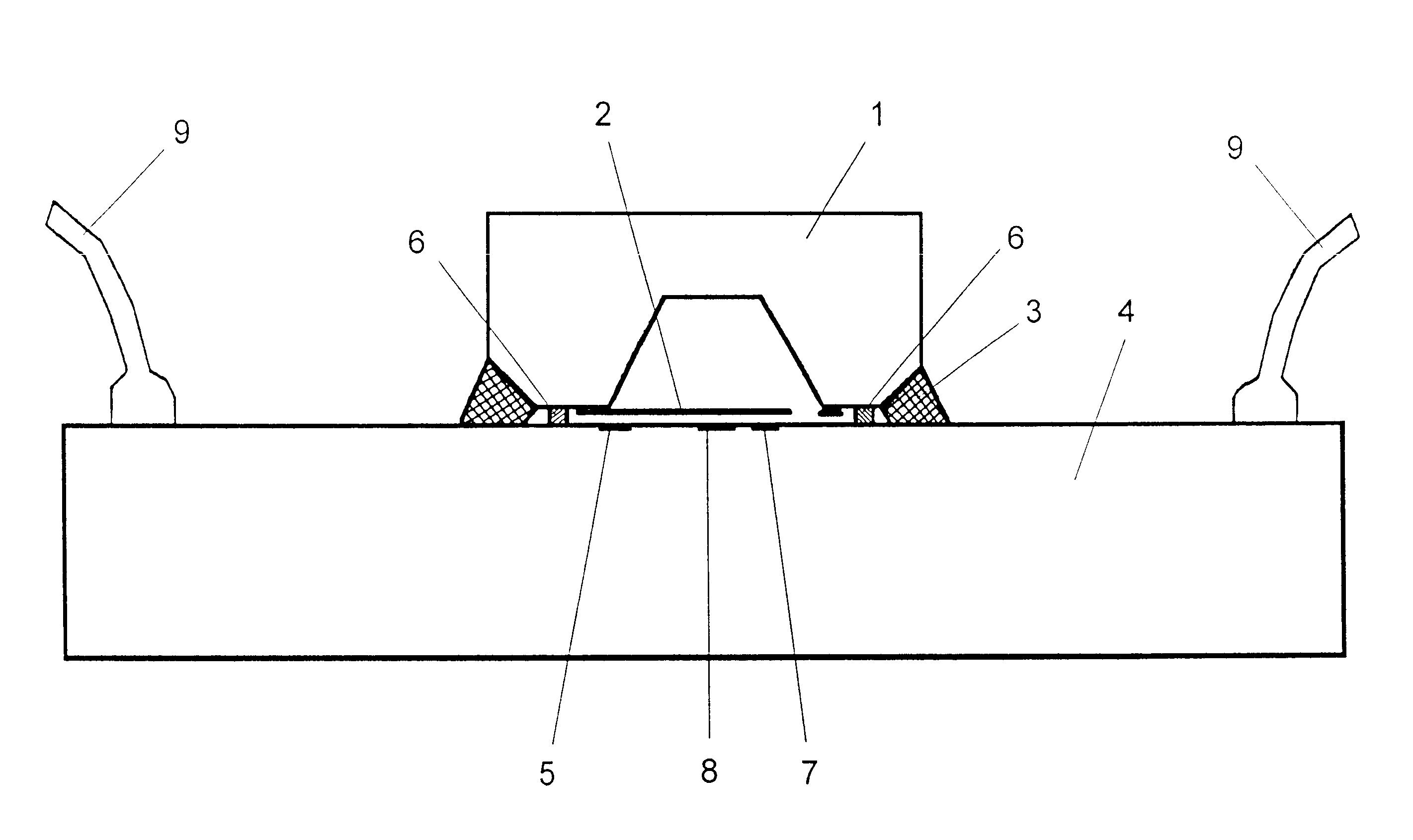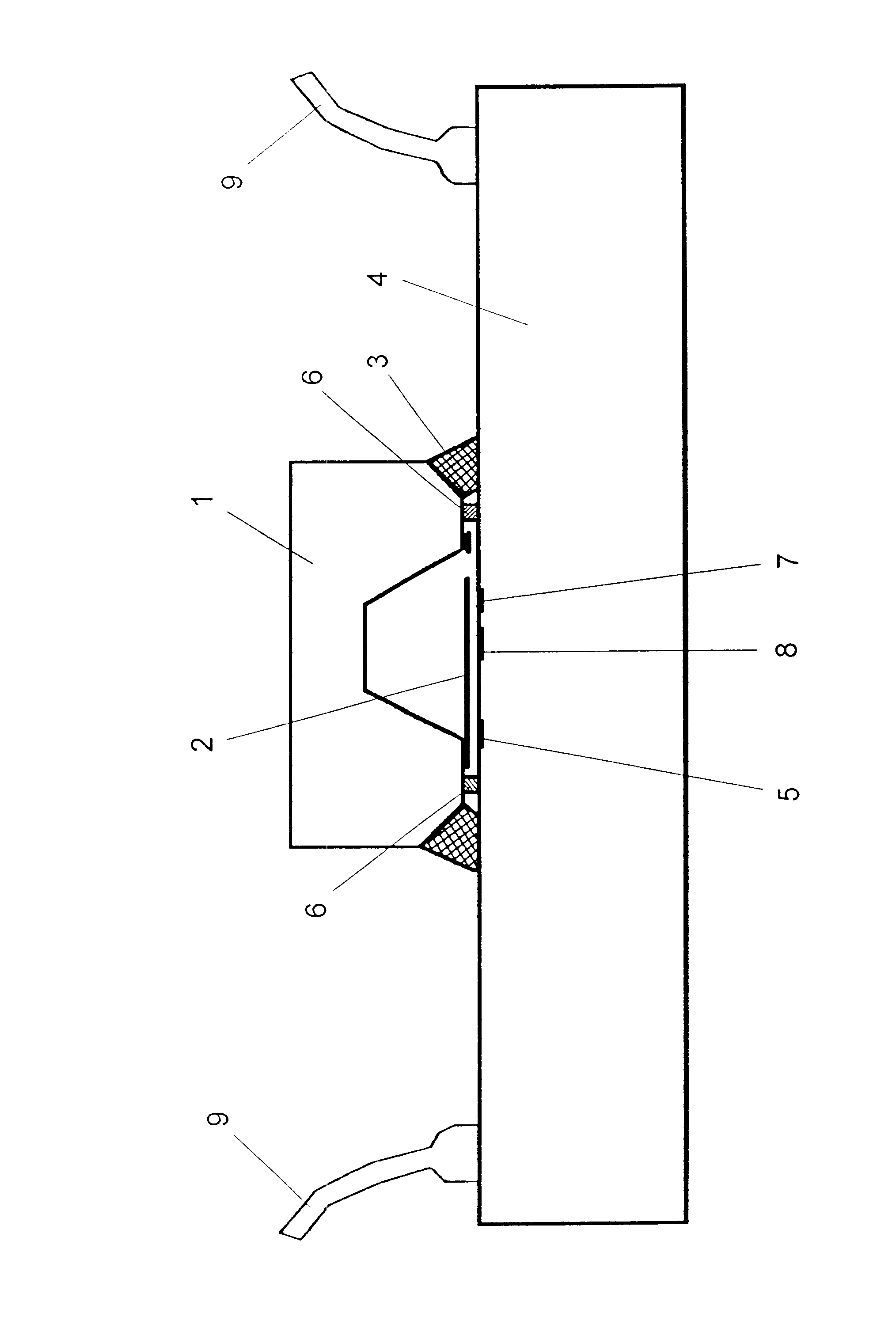Microsensor having a sensor device connected to an integrated circuit by a solder joint
a sensor device and integrated circuit technology, applied in the field of microsensors, can solve problems such as reducing sensitivity
- Summary
- Abstract
- Description
- Claims
- Application Information
AI Technical Summary
Benefits of technology
Problems solved by technology
Method used
Image
Examples
Embodiment Construction
In the FIGURE, a micro-electromechanical sensor element (1) consisting of electrically conductive silicon is shown. A flexural bar (2) is formed by back-etching, which in turn forms a capacitor plate, which in turn is connected to an IC (4) in an electrically conductive manner by a circulating soldered joint (3). Thereby, the integrated circuit (IC) (4) has a contact surface (5) on the surface facing the capacitor plate (2) of the micro-electromechanical sensor element (1), which together with the electrically conductive plate of the flexural bar (2) forms a reference capacitor, since the gap between this surface and the flexural bar (2) is subject to only minor changes, even on articulation of the flexural bar (2). Thereby, the gap is defined primarily by the spacer (6).
In case of acceleration, tilting or rotation, the dielectric gap between the flexural bar (2) and the electrically conductive plates of the IC underneath changes, whereby the capacitor plate of the measuring sensor ...
PUM
 Login to View More
Login to View More Abstract
Description
Claims
Application Information
 Login to View More
Login to View More - R&D
- Intellectual Property
- Life Sciences
- Materials
- Tech Scout
- Unparalleled Data Quality
- Higher Quality Content
- 60% Fewer Hallucinations
Browse by: Latest US Patents, China's latest patents, Technical Efficacy Thesaurus, Application Domain, Technology Topic, Popular Technical Reports.
© 2025 PatSnap. All rights reserved.Legal|Privacy policy|Modern Slavery Act Transparency Statement|Sitemap|About US| Contact US: help@patsnap.com


